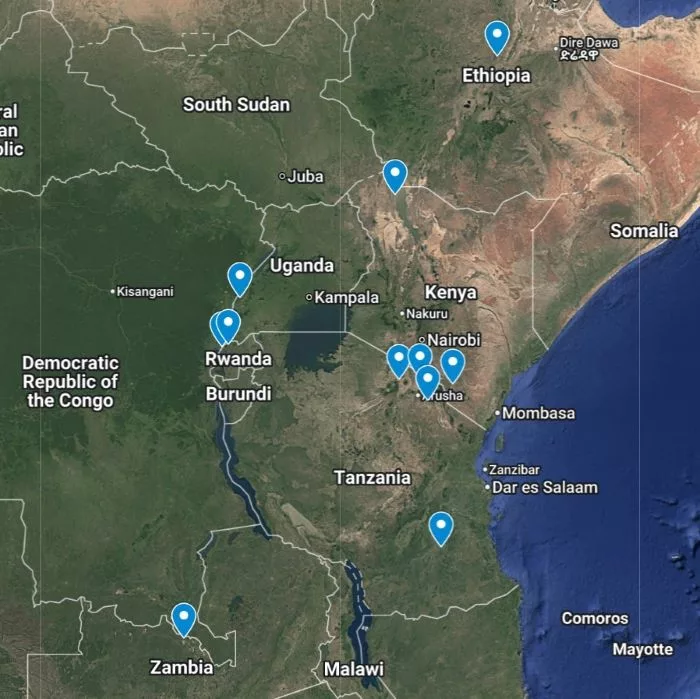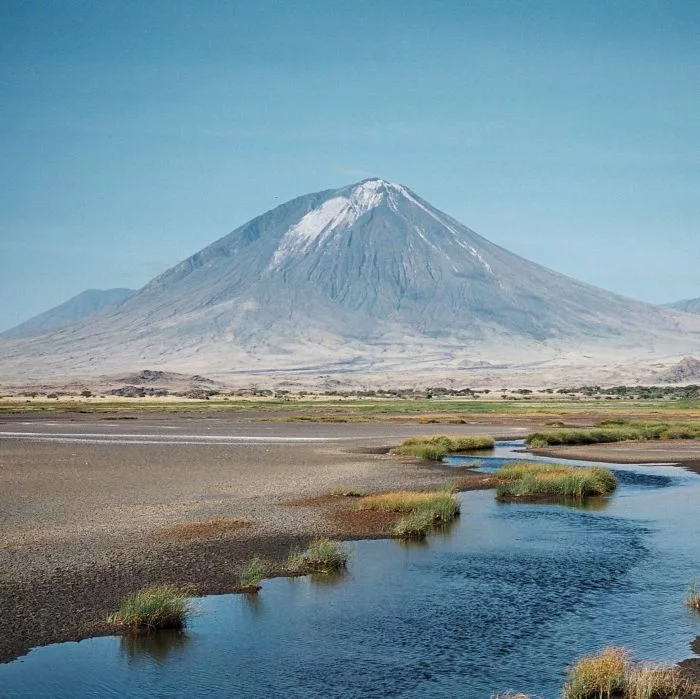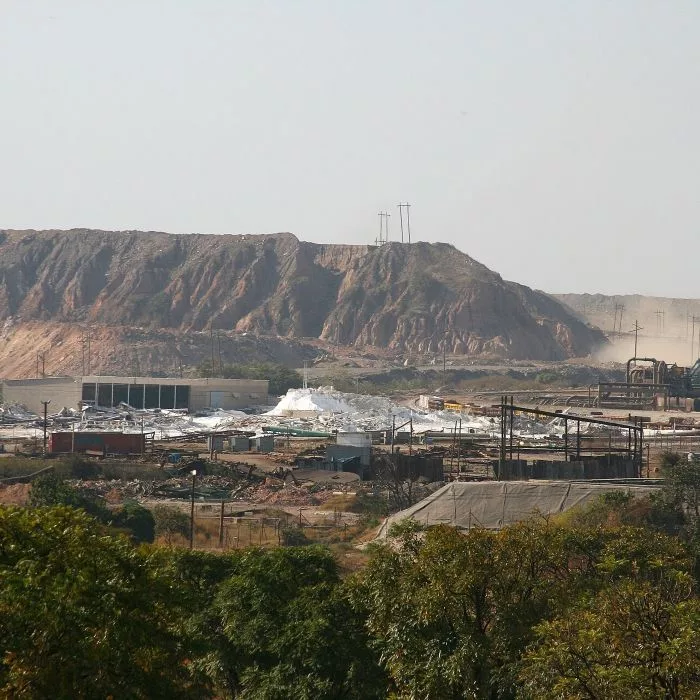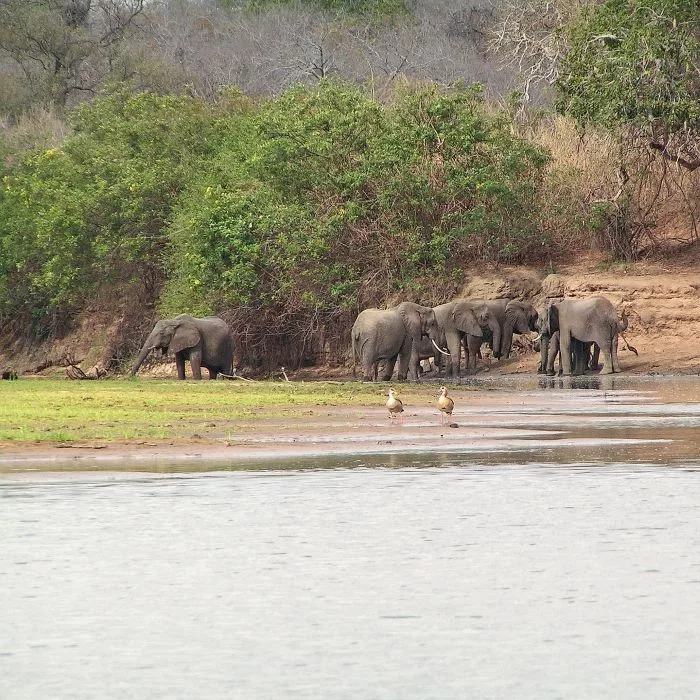A Traveller’s Guide
Whether you’re a rockhound, aspiring geologist, or just trying to spice up your trip, this guide will show you the top 10 geological destinations in Eastern Africa. And give you the tools you need to organise your trip for the most exploration, adventure, and eco-friendly travel.
For those interested in geology and minerals, Eastern Africa is a veritable gold mine. It is home to some of the planet’s most breathtaking tectonic features, gemstone mines, and volcanic landscapes.
Why Explore Eastern Africa’s Geological and Mineral Wonders?
With its dynamic Earth history spanning millions of years, Eastern Africa welcomes you to enter a living museum. Discovering its geological and mineral treasures involves more than just observing. It involves actively interacting with landscapes that tell tales of tectonic rifts, massive uplifted plateaus, and ancient volcanoes.
Embark on an Adventure
- Trek across rugged trails. Trek in iconic locations such as the Simien Mountains. Where volcanic origins have sculpted soaring cliffs and deep gorges that are millions of years in the making.
- Explore the dramatic escarpments and rift valleys of the East African Rift Valley, witnessing firsthand one of the world’s most important active tectonic zones.
- Visit vibrant gemstone mines in Tanzania and Kenya. Where you can unearth rare minerals like tanzanite and tsavorite garnet in their natural setting.
Ignite Your Curiosity
- Discover fossil sites in Lake Turkana and Ol Doinyo Lengai, where volcanic activity and early human history intersect.
- Join guided geological tours that explain the complex tectonics of the Nubian, Somali, and Victoria Plates, which shape the region’s landscape.
- Visit museums and interpretive centres across Eastern Africa that bring geological epochs and mineral formation to life through interactive learning. Tip: The Hyrax Hill Museum has an interesting archaeological section.
Connect with Culture
- Engage with Indigenous guides and local communities who share deep-rooted knowledge of the land’s spiritual and geological significance.
- Respect sacred and protected sites. Understanding how geology intertwines with cultural heritage will enrich your travel experience.
Witness Breathtaking Scenery
- Capture panoramic views of volcanic peaks, lush valleys, and ancient mountain ranges such as the Simien Mountains.
- Experience the shifting landscapes that transform from arid rift valleys to misty mountain highlands, revealing diverse ecosystems shaped by geological forces.
Gain Insight Into Earth’s Past
- Study layered rock formations and shield volcano remnants in the Simien Massif and surrounding regions.
- Explore fossil beds and geological evidence. Chronicling tectonic shifts, climate changes, and the evolution of life over millions of years.
Travel Responsibly
- Follow local guidelines and obtain necessary permits. Ensure the protection of fragile environments and cultural treasures, such as fossil beds and sacred sites.
- Practice sustainable fossicking by minimising environmental impact and supporting ethical sourcing of minerals.
- Support conservation efforts and Indigenous communities by choosing responsible tour operators and adhering to all regulations.
The geological and mineral sites in Eastern Africa enable you to develop into an adventurer, scholar, and land steward. As you embark on your journey, allow the ancient peaks, rifts, and minerals of Eastern Africa to change your viewpoint and rekindle your spirit of adventure.
How to Use This Guide
Travellers, students, mineral collectors, and anyone else seeking an amazing adventure should use this guide. An overview, highlighting what makes each destination unique, includes helpful travel tips and suggested activities.

Top 10 Geological Destinations in Eastern Africa
The East African Rift Valley (Kenya, Tanzania, Ethiopia, Uganda)


One of the continent’s most amazing geological features is the East African Rift Valley. The Rift Valley was created as the African tectonic plate gradually separated. From the Red Sea in the north through Kenya, Tanzania, and beyond, this tectonic process has produced a complicated network of fault lines, rift valleys, and volcanic activity. Dramatic escarpments, long basins called grabens, and a number of lake-filled depressions define the valley’s topography. The Nubian, Somali, Victoria, and Rovuma Plates are among the several plates that are gradually diverging. Sculpting the landscape through faulting and magmatic activity. These features are the tangible proof of continuous tectonic forces.
The East African Rift Valley is particularly intriguing because of its rich volcanic formations and dynamic geodynamics. Famous peaks like Mount Kilimanjaro and Mount Kenya can be found on the volcanically rich eastern branch of the rift. Some of the world’s deepest lakes, including Lake Tanganyika, can be found on the western branch. The rift is a dynamic centre of Earth’s crustal deformation. Distinguished by complex fault systems, volcanic eruptions, and continental flood basalts. The East African Rift Valley is a top destination for geology enthusiasts, due to its continuous geological activity that concentrates valuable mineral resources & creates stunning scenery.
Lake Turkana National Park (Kenya)

A geological wonder tucked away in the Eastern African Rift Valley system is Lake Turkana National Park in northern Kenya. Lake Turkana lies within the beds of two vast rift valleys formed by the movement of tectonic plates. The semi-desert terrain surrounding Lake Turkana is characterised by volcanic formations, rocky shorelines, and sedimentary deposits. These geological characteristics create a sharp contrast to the lake’s vibrant jade-green waters. The lake is primarily fed by the Omo River, which originates in Ethiopia, and is bordered by three volcanic islands.
The geological diversity of this UNESCO World Heritage site includes volcanic formations, such as Mount Sibiloi, which features a remnant petrified forest. These important geological and paleontological areas are protected within several national parks. The area boasts a wealth of fossils that date back millions of years, revealing early hominid ancestors and ancient ecosystems. Strong geological processes from the Pliocene and Holocene eras, such as enormous basalt flows and intricate tectonic activity that created grabens and volcanic islands, are depicted in its landscape. Lake Turkana offers a unique view into Earth’s evolving geology and ancient human history. It stands as a vital site for both tourists and researchers within the East African Rift Valley.
Tip: Visit Sibiloi National Park, its petrified forest, and the Koobi Fora Site.
Ol Doinyo Lengai (Tanzania)

The indigenous Maasai people call Ol Doinyo Lengai the “Mountain of God.” This distinctive and magnificent volcano is located in northern Tanzania’s active East African Rift Valley. This symmetrical volcanic cone, which rises approximately 1,800 meters above the surrounding terrain, features two distinct craters. A dormant southern crater that occasionally fills with water. And a constantly active northern crater that produces breathtaking natrocarbonatite lava flows.
The tectonic processes of the East African Rift System drive the separation of the African Plate into the Somali and Nubian Plates. This rifting causes crustal faulting and volcanic activity that influence the geology of Ol Doinyo Lengai. And is part of the greater Ngorongoro volcanic highland system. It formed over hundreds of thousands of years as magma rose through fractures created by the East African Rift System. Ol Doinyo Lengai is the only carbonatite volcano known to have erupted in recorded history. Its unique lava composition and active state attract both scientists and adventurous tourists. In addition to its geological significance, the Maasai place great spiritual value on Ol Doinyo Lengai because they believe it to be the home of their god Engai.
Tsavo National Park & Baringo County (Kenya)

In addition to being one of Kenya’s largest and most recognisable wildlife reserves, Tsavo National Park is a geological treasure trove. The Yatta Plateau, with the longest lava flow in the world, lies along the western edge of Tsavo East, characterised by expansive semi-arid grasslands and savannas. This ancient basaltic lava flow, stretching 290 kilometres, was created by eruptions from Ol Donyo Sabuk Mountain more than 250,000 years ago. It influences vegetation growth and water drainage patterns, thereby shaping the park’s ecosystem. Tsavo’s lengthy geological history is also highlighted by features such as Mudanda Rock. A massive Precambrian basement rock formation that offers unique vantage points for wildlife viewing.
The untamed volcanic landscapes of Tsavo West, on the other hand, include rocky outcrops, volcanic cones, and vast lava fields like the striking Shetani Lava Flow, which formed some 500 years ago from the neighbouring Chyulu Hills. Additionally, this region is home to Mzima Springs, where lava rock formations produce glistening water that provides wildlife with essential watering holes. Geological features such as the Roaring Rocks offer unique opportunities for observing wildlife, particularly lions, and stunning panoramic views of the park. When combined, Tsavo East and West offer amazing biodiversity along with rich geological features, making the park a must-see for safari tourists and geology buffs alike.
Ruby and Sapphire Mines (Tanzania— Longido, Umba Valley)
Some of the finest and most vivid gemstones in the world are known to be produced by the ruby and sapphire mines in Tanzania’s Longido region and the Umba Valley. Although the majority of the ruby stones found in Longido, which is close to Mount Kilimanjaro, are smaller and better suited for cabochons or carvings, the area is well-known for its ruby deposits. Although there is less mining here than in other areas, it still plays a significant role in preserving the supply of these valuable stones. Metamorphic rocks and intricate structural zones that have produced favourable conditions for ruby formation over millions of years define Longido’s geology.
In the meantime, the Umba Valley is home to an astounding array of sapphires, from rare colour-change stones that change colour in response to light to deep blue sapphires. Mining in this region currently focuses primarily on the Umba River’s alluvial deposits. The area is also rich in other gemstones, such as garnets and spinels, as well as various additional gem varieties. The sapphires in this area are valued for their striking natural hues and scarcity; they are often left untreated, which enhances their value. The mining cultures of both the Longido and Umba regions combine contemporary mechanised efforts with age-old artisanal techniques.
Tip: Check out the Gemstone Detective as they sometimes organise tours to the Umba region.
Mererani Hills (Tanzania)

The Mererani Hills, near Mount Kilimanjaro in northern Tanzania, are the only place in the world where tanzanite, a rare and beautiful blue-violet gemstone, is found. This unique gemstone is highly prized by collectors worldwide. Within the active East African Rift system, this narrow strip of hills is roughly 8 kilometres long and 2 kilometres wide. Geologically, it is a part of the Lelatema Mountains. Pegmatitic veins and hydrothermal fracture fillings embedded in metamorphosed sedimentary rocks, including calc-silicate schists and graphite-bearing gneiss, are home to tanzanite deposits. The Mererani Hills are a site of scientific and commercial significance because of the rare formation of tanzanite, which was made possible by a special combination of high pressures, temperatures, and mineral-rich fluids over millions of years.
In the Mererani region, tanzanite mining involves extracting gemstones from intricate structural zones characterised by faulting, folding, and hydrothermal alteration. With thousands of miners operating both organised and artisanal operations across several mining blocks, the local mining community is sizable. The region’s mineralogical diversity is further enhanced by the presence of other rare minerals, such as diopside and tsavorite garnet, in the hills.
Tip: To see the underground operations up close and learn more about the geological processes, you can take advantage of guided tours of the mining sites.
Copperbelt Region (Zambia—Chililabombwe, Nchanga Mine)

The Copperbelt Region of Zambia is one of the world’s richest and largest sediment-hosted copper provinces, encompassing key locations such as Chililabombwe and the Nchanga Mine. The Neoproterozoic Katanga Supergroup is a sedimentary basin made up of layered clastic and carbonate rocks. These rocks have been disrupted by numerous tectonic and magmatic events over hundreds of millions of years, resulting in the complex geological setting of the area. Multiple phases of mineralisation introduced copper and cobalt ores through metalliferous hydrothermal fluids interacting with permeable basement and sedimentary rocks, giving rise to the region’s mineral wealth. One of Zambia’s largest copper producers, the Nchanga Mine, is a prime example of this complex mineralisation and continues to make a substantial economic contribution to the nation.
Formal mining operations began in the early 20th century, but indigenous peoples had been mining copper in the area for a long time before modern exploration. Since then, the Copperbelt has experienced waves of exploration and growth, making Zambia a significant global copper producer. Deep structural features, such as basement shear zones and faults that regulate ore localisation, are closely linked to the metallurgy in this area. Geologists and mining professionals interested in the past and future of copper production in Eastern Africa will find the region to be an exciting destination. With modern mining techniques and exploration methods continually improving, particularly through the integration of digital and artificial intelligence technologies. The region still has a significant amount of untapped potential for new discoveries.
Virunga Mountains and Nyiragongo Volcano (Rwanda, DRC, Uganda)

Along the borders of Rwanda, the Democratic Republic of the Congo, and Uganda, the Virunga Mountains form a striking volcanic chain. Nyiragongo and Nyamulagira are the most active and well-known for their frequent eruptions among the eight sizable volcanoes in this range. Nyiragongo is especially renowned for its destructive eruptions and an incredibly fluid lava lake, which have altered the surrounding landscape and impacted neighbouring communities. The geology of the Virungas is characterised by a mix of trachytic domes and basaltic lava flows, where deep mantle sources that rise through tectonic fissures fuel volcanic activity.
Due to its extremely fluid lava and capacity for swift, massive eruptions, Nyiragongo Volcano stands out as one of Africa’s most hazardous and geologically significant volcanoes. The summit crater is constantly being moved and reshaped by its lava lake, the largest of its kind on Earth, producing a dynamic and striking sight. Significant damage was caused by the 2002 eruption of the volcano, which also affected portions of the DRC’s Goma city. In addition to their geological significance, Nyiragongo and the larger Virunga range are crucial habitats for endangered species and hold great cultural significance for the local people, who coexist with and respect the volcano’s power. The Virunga Mountains & Nyiragongo Volcano are a must-see destination due to their unique combination of active volcanism, geological complexity, and ecological richness.
Travel tip: See the Mountain Gorillas in the wild!
Rwenzori Mountains (Uganda)

The stunning Rwenzori Mountains, also known as the “Mountains of the Moon,” form the border between Uganda and the Democratic Republic of the Congo. With elevations of more than 5,100 meters, they are Africa’s highest non-volcanic mountains. Among the highest peaks on the continent are Mount Stanley and its well-known Margherita Peak. These magnificent mountains are renowned for their permanent glaciers, cascading waterfalls, and numerous picturesque lakes. Within the East African Rift system, the Rwenzori are a unique and complex landscape. Geologically, they are an uplifted block of ancient crystalline rocks that date back hundreds of millions of years, including gneiss, granite, amphibolite, and quartzite.
The Rwenzori Mountains are not only breathtakingly beautiful, but they are also crucial to the region’s hydrology, as they feed rivers that are vital sources of the Nile. The range’s steep valleys and deep gorges were formed over millions of years by tectonic uplift and erosion. Continuous geological activity shapes the equatorial highland environment, resulting in varied lithologies and frequent landslides.
Tip: When hiking in the Rwenzori Mountains, you can stay in huts along the hiking routes.
Selous Game Reserve (Tanzania)

One of Africa’s largest and most ecologically diverse protected wilderness areas is the Selous Game Reserve, which is now part of the Nyerere National Park. It spans more than 50,000 square kilometres in southern Tanzania. It is home to a diverse array of habitats, including lowland rainforests, riverine forests, swamps, rocky hills covered in acacia, and deciduous Miombo woodlands. The Rufiji River and its tributaries, which produce seasonally flooded grasslands and a distinctive geological environment, are responsible for shaping this dynamic landscape. Visitors can experience unique geological features, such as inselbergs (isolated rock hills), vast networks of sand rivers created by erosion during intense rainfall, and rugged terrain sculpted by alluvial deposits and ancient rocks, along this vast expanse.
In addition to its abundant biodiversity, the Selous region offers unique fossicking opportunities for adventurous tourists seeking lesser-known fossil and mineral sites. Although this place is primarily known for its wildlife, exploration is made even more interesting by its geological setting. Selous, a hidden gem among the Top 10 Geological Destinations in Eastern Africa for tourists interested in both nature and Earth’s ancient processes, blends ecological vitality with fascinating geological formations, from rocky outcrops to sandy riverbeds.
Place to stay: Selous Impala Camp
Planning Your Geological Adventure
Geological and mineral destinations in Eastern Africa promise unforgettable experiences. But preparation is key to making your adventure safe, enjoyable, and responsible. Take these proactive steps to ensure you get the most out of your journey.
Essential Travel Tips
- Pack for the terrain. Select sturdy footwear to navigate rocky paths, caves, and uneven terrain. Bring sun protection, wide-brimmed hats, sunglasses, and high-SPF sunscreen to shield yourself from Australia’s intense UV rays. Always carry plenty of water, especially when venturing into the outback or remote mining areas, where services can be sparse.
- Prepare for remote conditions. Study detailed maps and use digital navigation tools to chart your route. Identify refuelling points, water sources, and emergency contacts before you set out. Download offline maps and ensure your vehicle is in top condition for long distances across rugged terrain.
- Respect local communities. Research your destinations in advance and check if you require permits to access national parks. Many regions have straightforward online permit systems, but some licenses require advance notice, so apply early.
Responsible Fossicking and Geotourism
- Understand local rules and regulations. Each country in Eastern Africa, such as Kenya, Tanzania, Uganda, and Ethiopia, has specific laws and guidelines regarding fossicking, mineral collecting, and access to geological sites. Before visiting, review these regulations online or consult local visitor centres to know where and what you can legally collect or explore. Many areas, particularly national parks and UNESCO-designated sites, require permits or organised tours to protect sensitive environments.
- Adopt leave-no-trace principles. Minimise your environmental impact by sticking to marked trails, avoiding disturbing wildlife and cultural sites, and removing no minerals unless explicitly permitted. Always leave the natural landscape as you found it to help preserve these geological wonders for future visitors and scientific study.
- Seek local guidance and support for community initiatives. Engage with regional visitor centres, local guides, and conservation organisations to gain up-to-date information on site conditions, safety, and permit requirements. Support community-run tours and educational programs which empower local people and promote sustainable tourism.
By embracing responsible practices, you help safeguard Eastern Africa’s rich geological heritage and foster positive relationships with local communities. Thoughtful planning transforms your journey into a respectful, safe, and enriching experience that contributes to the conservation of this unique landscape for generations to come.
Conclusion
Nowhere else on Earth do geology and adventure come together like in Eastern Africa. Travellers are rewarded with breathtaking views and fascinating tales by epic rift valleys, historic lake basins, fabled mines, and active volcanoes. By conducting responsible exploration that respects both cultures and landscapes, you contribute to the preservation of Eastern Africa’s mineral heritage for future generations.
Take a trip back in time to see why Eastern Africa is a must-see destination for all geology and mineral lovers.
Frequently Asked Questions (FAQs)
Most sites are accessible year-round, but the dry season (June–September, January–March) offers clearer trails and ideal wildlife viewing. The wet season brings lush vegetation and fewer crowds, but it also presents tougher travel conditions in remote regions.
Some destinations allow you to fossick for semi-precious stones or collect rocks, provided you have the correct permits and follow local guidance. In major mining areas, collection is tightly regulated or prohibited.
Always hire certified guides, inform someone of your travel plans, and carry emergency supplies with you. Stay updated on local weather conditions and avoid solo trekking in remote volcanic or mountainous areas.
Yes, many offer family-friendly trails, guided tours, and basic facilities. However, adventure-level sites (such as volcano climbing and deep cave mining) require good fitness and thorough preparation.
Ready to Start Your Gemstone Journey?
Don’t wait to discover the world of gemstones! Explore these essential reads right away.
Fascinated by this article and want to deepen your gemstone expertise? Dive into our comprehensive Gemstone Encyclopedia. Here, you’ll discover detailed information about hundreds of precious and semi-precious stones, including their properties and values.
For those interested in the rich cultural significance and fascinating stories behind these treasures, our History section offers captivating insights into how gemstones have shaped civilisations. Or perhaps you’d like to learn more about birthstones?
And if you’re considering gemstones as more than just beautiful adornments, visit our Precious Metal Investing guide. Here you will learn how these natural wonders can become valuable additions to your investment portfolio.


